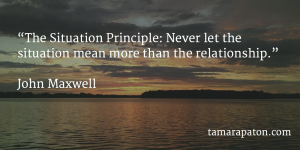

Many organizations evaluate board and director performance using surveys or consultants. These approaches feel safe and familiar, especially for those accustomed to the formality of board policy documents and Roberts’ Rules. But what if directors gave one another feedback directly? Without a questionnaire, survey or consultant bridging the gap?
When the MEC board experimented with a new peer feedback approach last year, we piqued other boards’ curiosity. MEC directors complemented our time-tested, formal assessment tools by pairing up face-to-face. For those of us participating, the prospect of offering direct feedback was intriguing and even a bit nerve wracking.
(To learn more about the approach used by MEC and originated by the Vancity management team, see our Chief Governance Officer’s detailed account in the Director Journal last spring.)
Last weekend, the MEC board repeated the exercise, a year later and (hopefully) wiser. The experience confirmed that just a few hours of work can pivot a board’s energy, cohesion, and performance. I know I feel more focused on my next frontier of growth and more invested in my colleagues’ success.
Whatever your preferred method, there are some common themes that support how we give, interpret and act on feedback.
Prepare well
Prior to giving and receiving feedback, thoughtful reflection is a must. How can you best support your colleague’s development? Do you know the individual well enough to take a risk and step outside the “I think you’re great” comfort zone? What examples can you cite to illustrate the behaviors you observe?
You’ll also receive feedback more productively if you begin with a solid view of your own strengths and opportunities for improvement. During the recent MEC feedback session, I communicated my desire to lead more of the board’s problem solving, rather than relying on my habit of synthesizing the discussion and posing a question. My colleagues responded with ways for me to step into that leadership role, based on their observation of my past performance. Sharing my own thoughtful preparation assured my colleagues that I would appreciate – and not resist – their input.
Set boundaries
Several years ago, one of my least favorite colleagues approached me with “You’re a smart girl…” before questioning my value to the organization. Given that I am a grown woman, his “smart girl” reference was back-handed at best. In hindsight, I shouldn’t have given him the opportunity to continue beyond that point.
Perhaps you have dealt with a colleague set to demean your standing. As much as I encourage framing feedback as a gift, some gift-givers don’t deserve the privilege. In her recent book Rising Strong, Brené Brown guides how we interpret people’s opinions of us:
“When we stop caring what people think, we lose our capacity for connection. But when we are defined by what people think, we lose the courage to be vulnerable. The solution is getting totally clear on the people whose opinions actually matter. On a one-inch-by-one-inch square of paper, I want you to write down the names of the people who really matter. This is a sacred little space. If you have more names than can fit on a square this size, you need to edit.”
The one-inch square of paper approach may seem too drastic in a professional context. At the very least, I encourage you to ensure that both parties in the relationship satisfy the elements of Brown’s Engaged Feedback Checklist:
1. I’m ready to sit next to you rather than across from you.
2. I’m willing to put the problem in front of us rather than between us (or sliding it toward you).
3. I’m ready to listen ask questions, and accept that I may not fully understand the issue.
4. I want to acknowledge what you do well instead of picking apart your mistakes.
5. I recognize your strengths and how you can use them to address your challenges.
6. I can hold you accountable without shaming or blaming you.
7. I’m willing to own my part.
8. I can genuinely thank you for your efforts rather than criticize you for your failings.
9. I can talk about how resolving these challenges will lead to your growth and opportunity.
10. I can model the vulnerability and openness that I expect to see from you.
If your relationship with a colleague fails any element of this list, it’s worth considering whether exchanging feedback is going to be helpful. Even worse, the exercise can be destructive. This was certainly my experience when the “smart girl” feedback shut down my willingness continue a previously strained relationship.
Take stock and take action
With fresh feedback in hand, how are you going to invest in your progress? What behaviors will you change? Would training or self-study support your development? How might a coach or mentor hold you accountable?
Answering these questions within 24 hours of receiving feedback helps me initiate meaningful change. I like to draft answers to these questions as soon as possible. For extra credit, you can share your new development plan with a fellow director or two. Doing so allows others to note and support your progress going forward.
I will admit that hearing about our foibles isn’t always comfortable. A respectful and constructive process eases the exchange and maintains our focus on positive outcomes. Done well, the process can build trust that supports a board’s work immensely.
Question: Does your board or workplace encourage peer feedback? How do you interpret and act on the resulting insights? I’d love to continue the conversation via Twitter.








